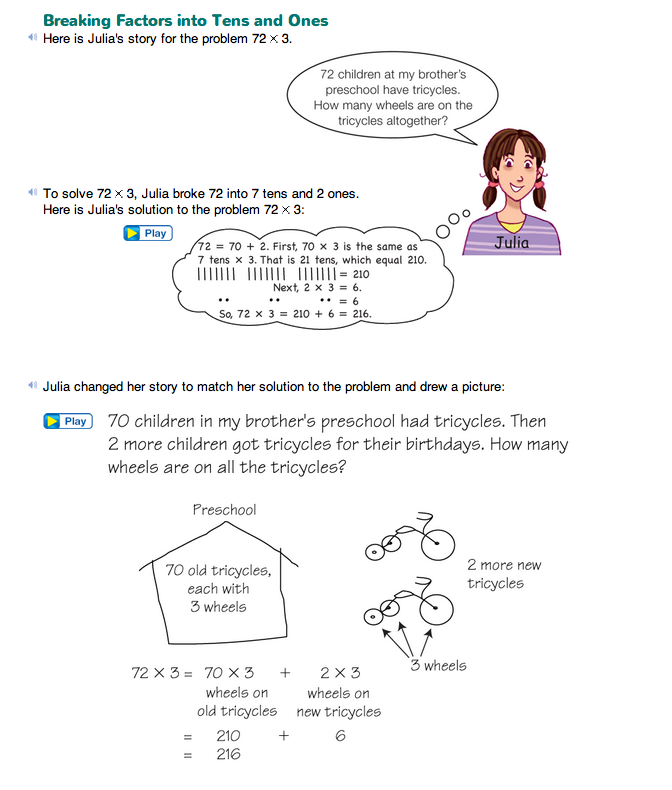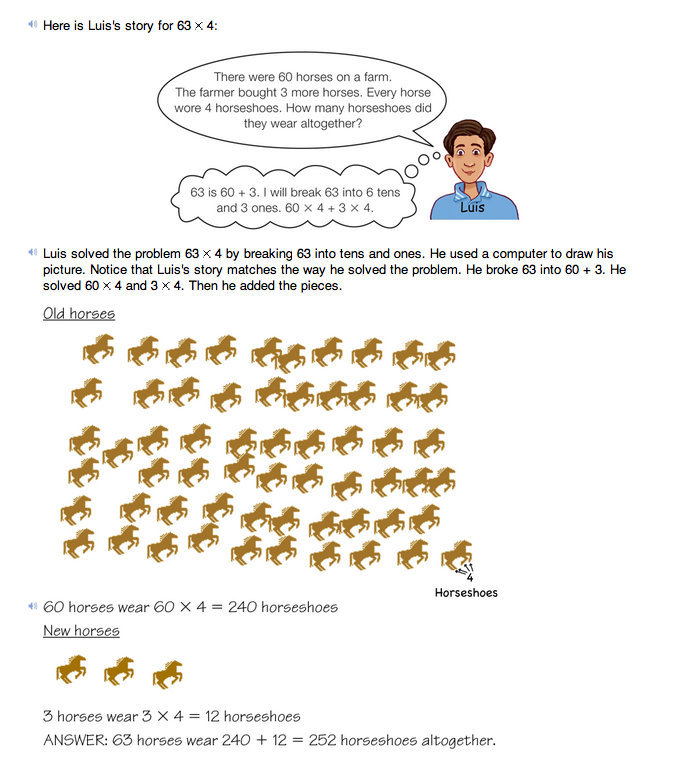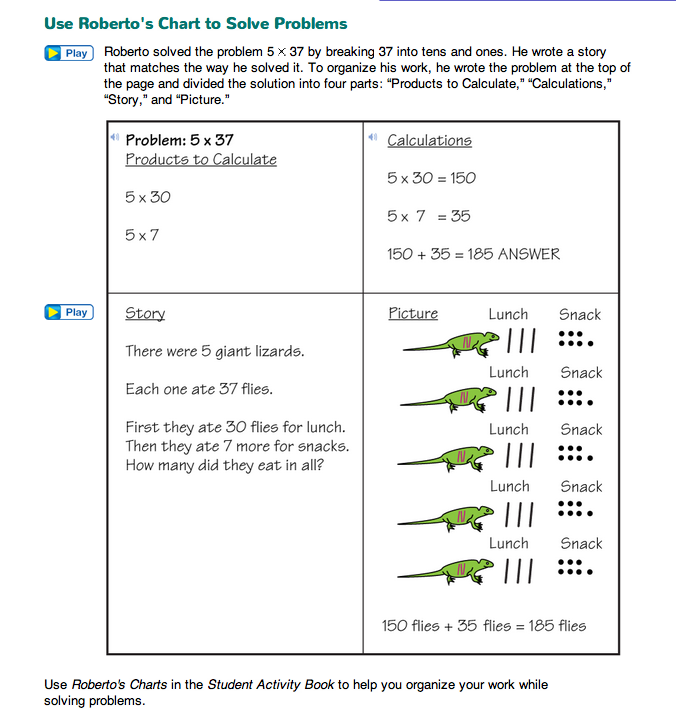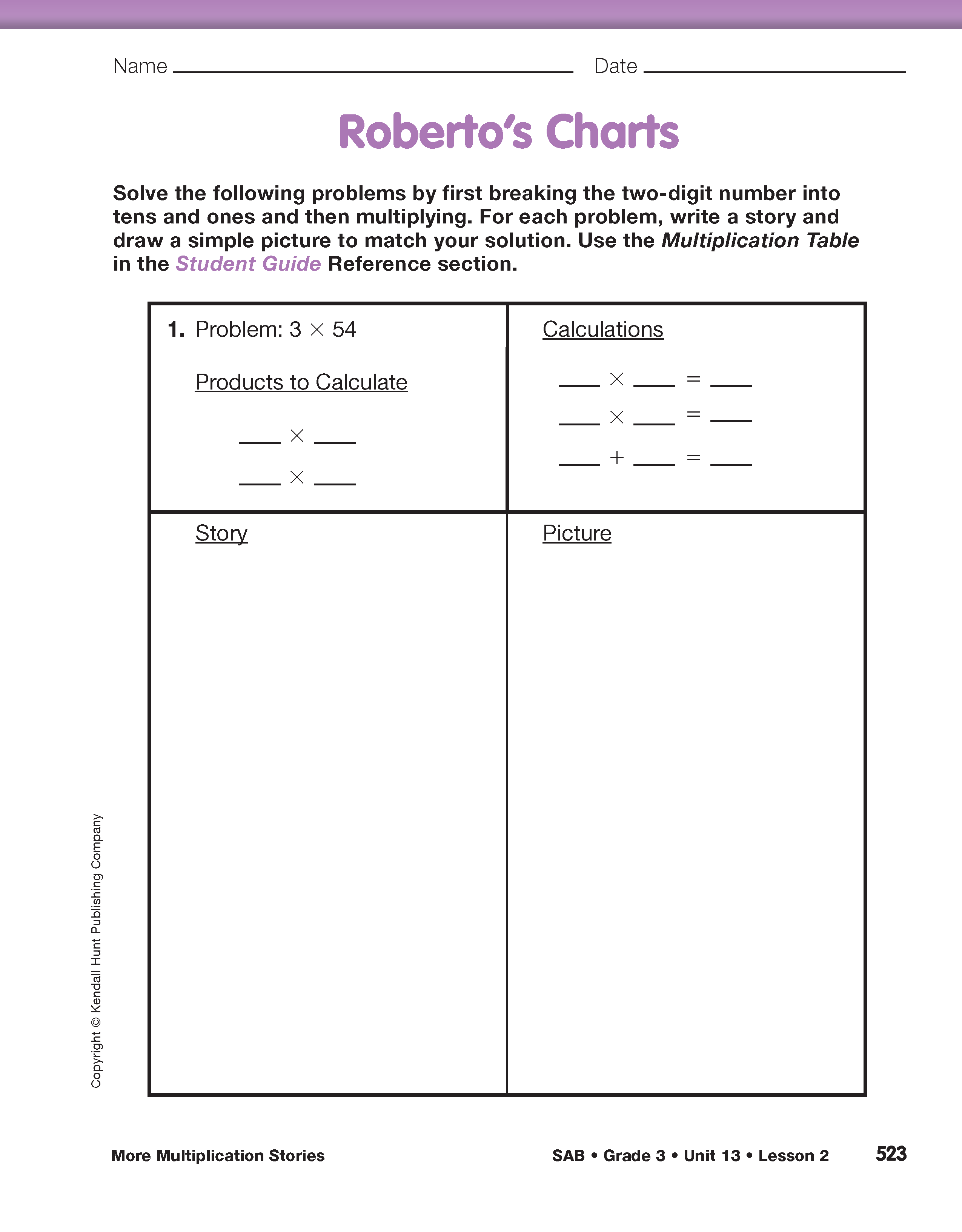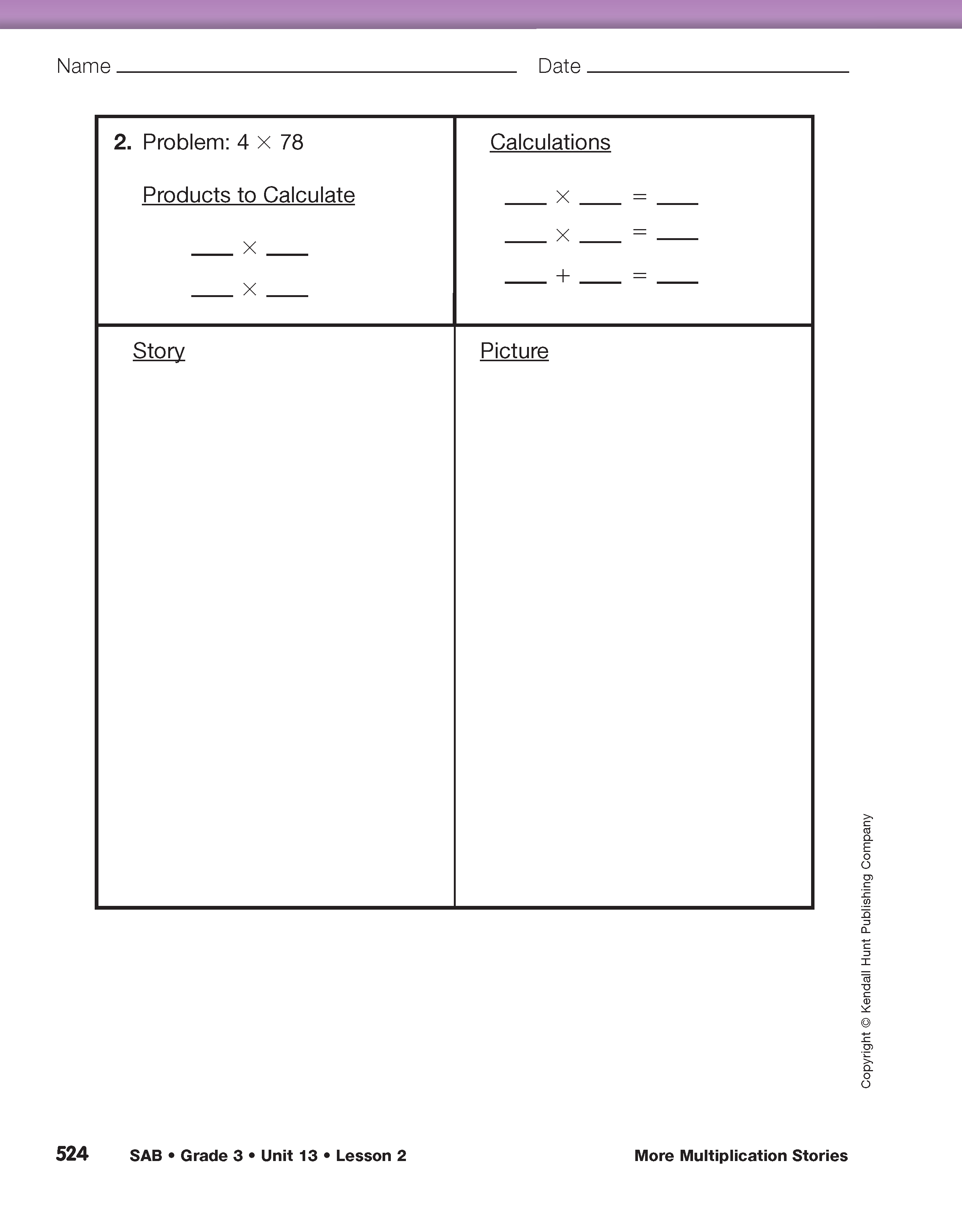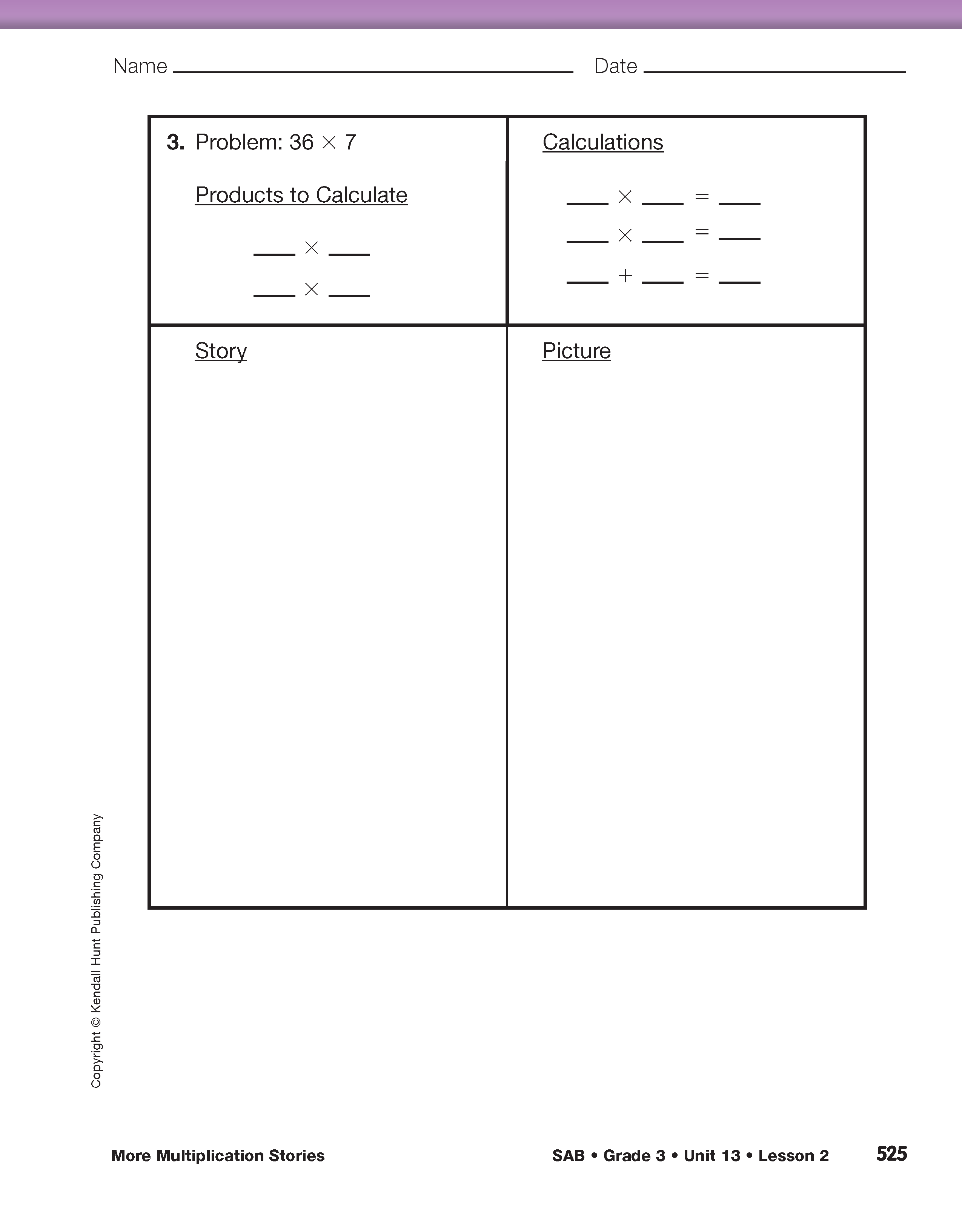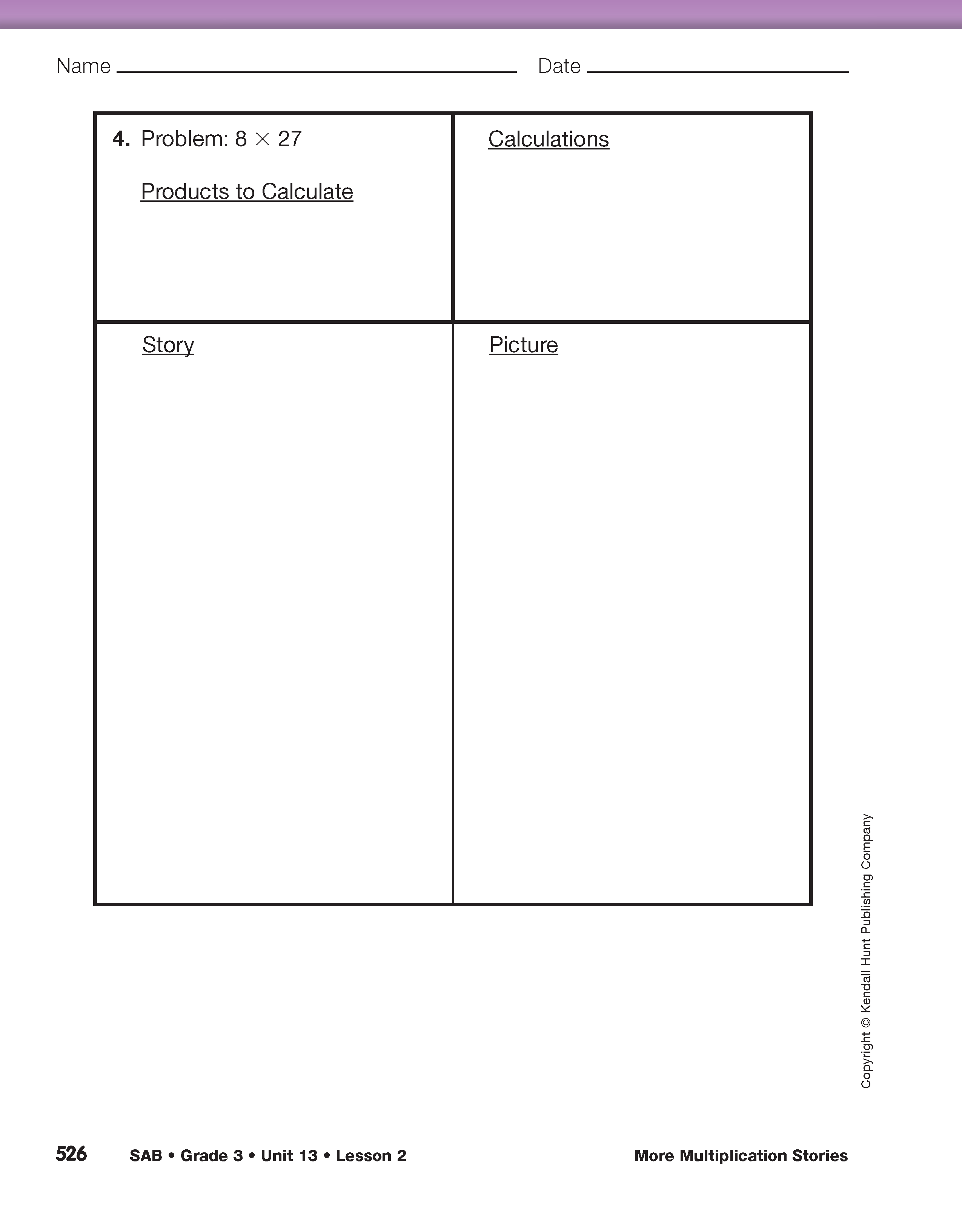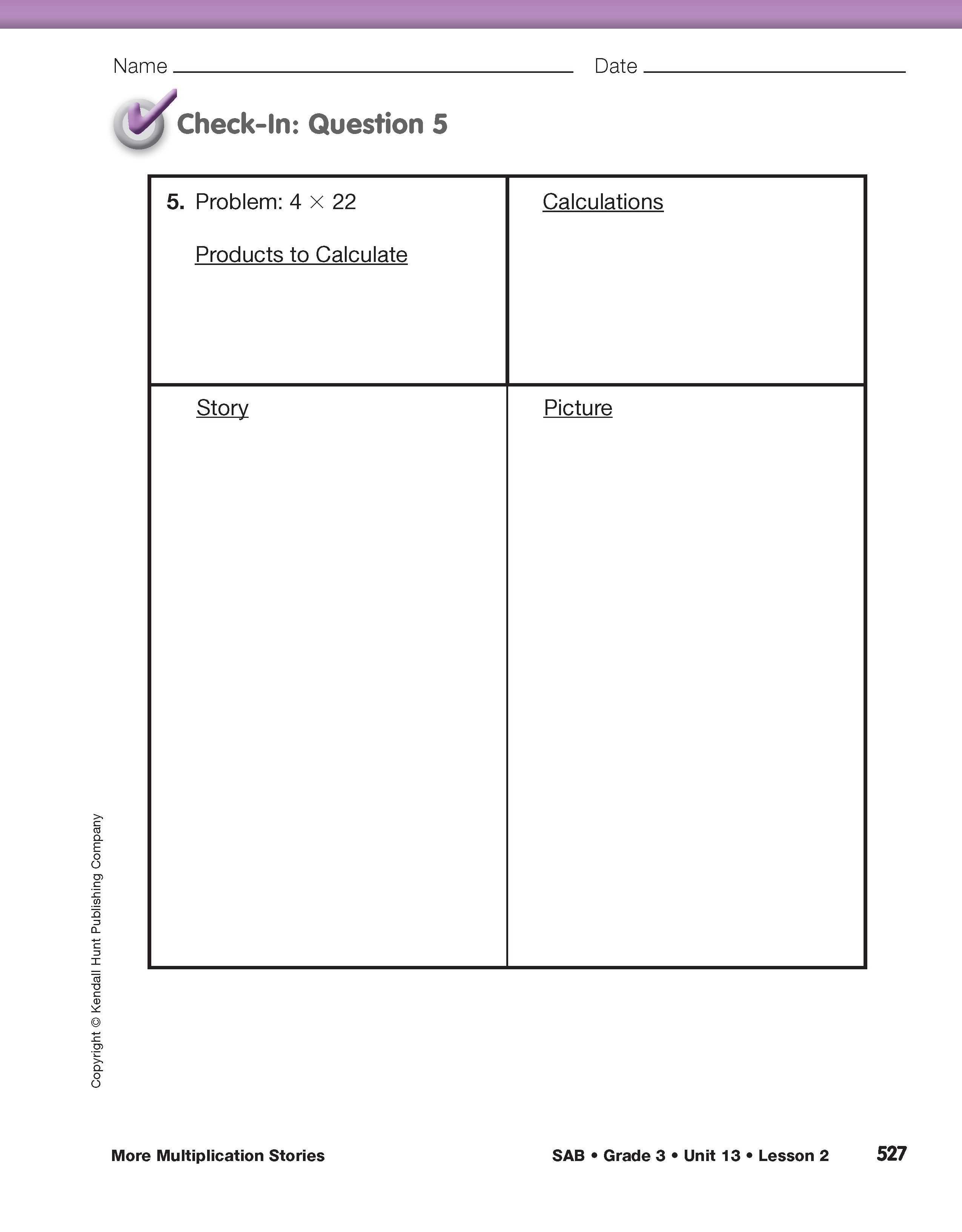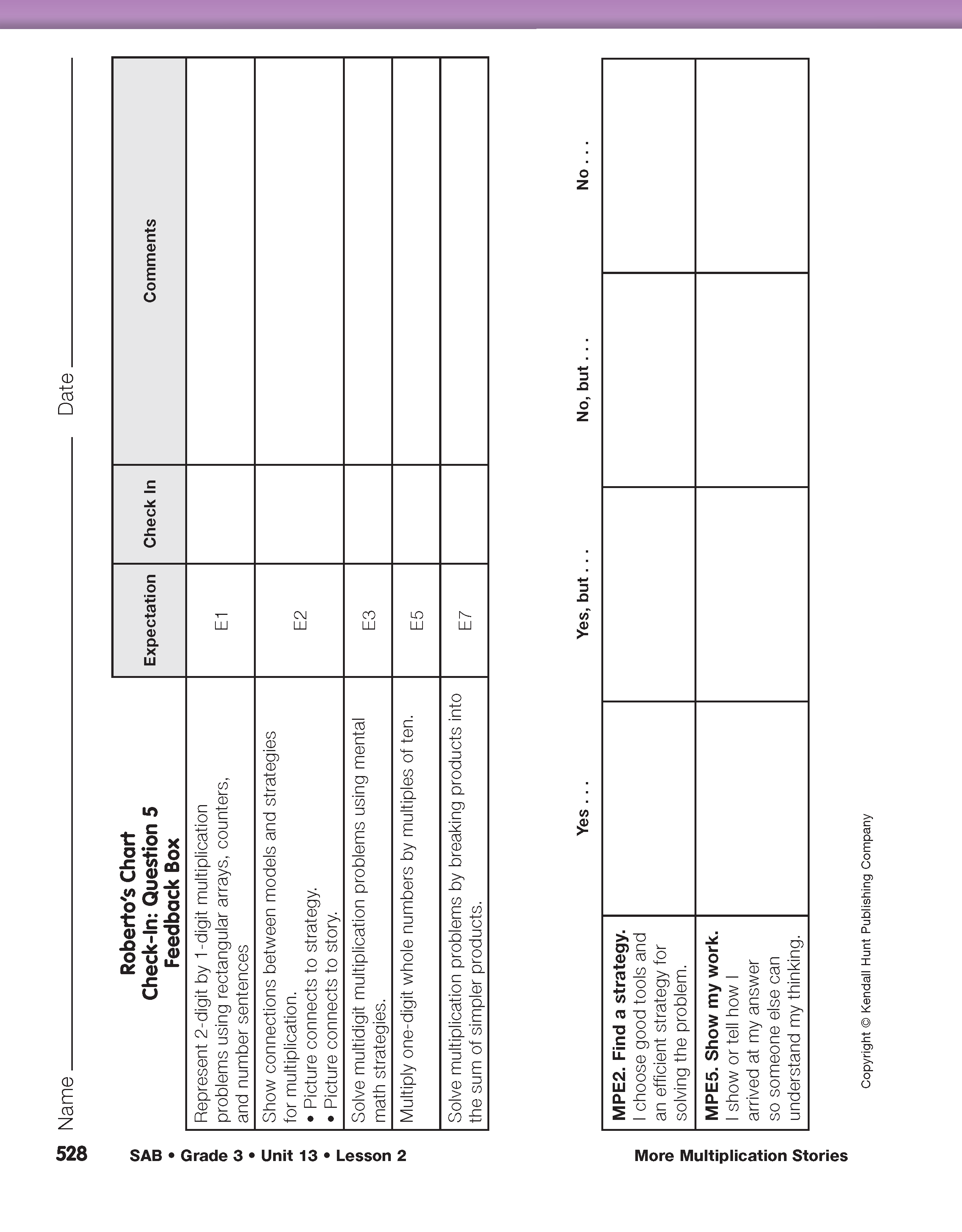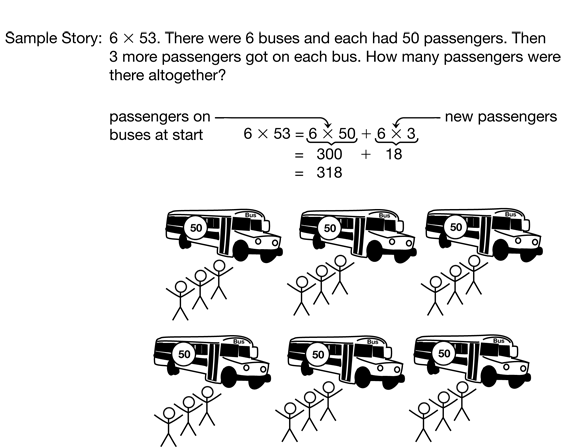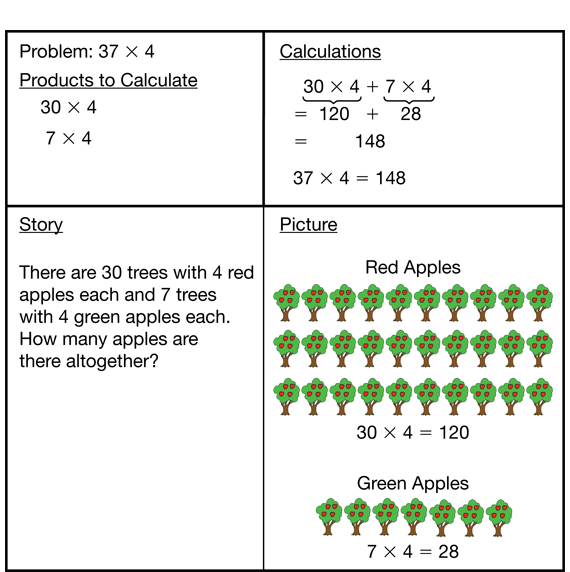More Multiplication Stories
Est. Class Sessions: 2Developing the Lesson
Part 3. Breaking Factors into Tens and Ones
Read Multiplication Stories. After discussing various ways to multiply, tell students that you would now like them to focus on a particular way to break products apart: partitioning factors into tens and ones. This is used in the paper- and-pencil multiplication algorithm and is helpful in doing mental calculations.
The More Multiplication Stories pages in the Student Guide continue with two stories, Julia's story for 72 × 3 and Luis's story for 63 × 4, which involve partitioning one factor into tens and ones. Discuss these stories with the class.
Ask the following questions as you discuss Julia's story:
Ask similar questions about Luis's stories for 63 × 4.
Write Multiplication Stories. Continue writing and illustrating stories for more two-digit by one-digit multiplication problems, first as a class and then individually when the students are ready.
The stories should have a common theme of splitting numbers into smaller groups of tens and ones. Drawing pictures should help students see why this particular way of solving multiplication problems—breaking apart products into tens and ones—makes sense. Making number sentences and pictures will help students connect the arithmetic process they use to standard symbols.
To get started ask:
Use Roberto's Chart to Solve Problems. Direct students' attention back to the More Multiplication Stories pages in the Student Guide. Read the Use Roberto's Chart to Solve Problems section. Students can organize their work the way Roberto does by showing the products to add, their calculations, the story, and a picture. Emphasize to students that they should draw simple pictures. Point out that instead of drawing 185 flies, Roberto uses base-ten shorthand to represent them in his picture. He draws 3 skinnies to show 30 flies in each lizard's lunch. Then he draws 7 bits by each lizard to show how many flies each lizard eats for a snack.
Display the blank Roberto's Chart Master. Pose the following problem and demonstrate how students can use Roberto's chart to organize their work. Record students' responses on the display. See Figure 4 for a sample problem and completed chart.
Say:
Assign Questions 1–5 on the Roberto's Charts pages in the Student Activity Book. Students solve one-digit by two-digit multiplication problems by breaking the two-digit number into tens and ones and then multiplying. For each problem, they write a story and pictures to match the solution. They organize their work the way Roberto did by showing the products to add, their calculations, story, and picture. They should clearly indicate their answers on their work.
As students work, pay close attention to how they solve the problems. When they are done, you can selectively choose students to share different solution strategies. Look for one or two interesting strategies that students could use to solve another problem later.
Select one of the problems from the Roberto's Charts pages to discuss. Based on your monitoring of the students' problem solving, select several students to share their work so that you can discuss a variety of strategies. Allow students to display their charts.
Ask questions similar to the following:













